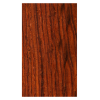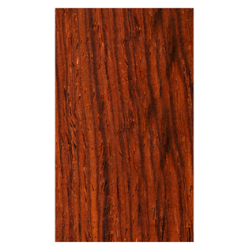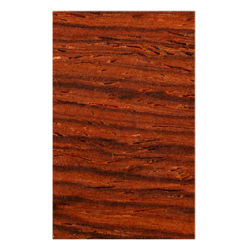Cocobolo

Family: Fabaceae - Order: Fabales - Class: Magnoliopsida
Scientific
name: Dalbergia retusa
Trade name:
Cocobolo, Cocobola,
Cocabola
Also known as Cocobolo
Prieto, Funeram, Granadillo, Jacarandáholz, Nambar and Nicaraguan Rosewood
Origin: Central America
Instrumental uses:
Guitar back and sides,
fingerboards, bridges, head plates, bindings, peg heads, turnery and woodwind parts.
Tonal properties:
Cocobolo is a
dense and stiff wood, and a true rosewood with abrighter tone than some rosewoods.
On the other hand, the low end, even with nice deep basses, is not the best
atribute of this wood: With good
presence and extraordinary sound projection, Cocobolo has a medium to long
decay and very good note definition. With the correct ageing, this very oily
wood can achieve a great and refined sound.
Is good mostly for fingerstyle guitarists. Can be used
also as fingerboards with extraordinary results with a great sustained sound
transmission.
Is easy to work and finishes incredibly well. With age
gets darker with a very refined color.
The grain is
straight to interlocked and very dense and consistent. It is a tropical hard wood but is very stiff, very
consistent, with an average
dried weight nearly of 69 lbs/ft3 or 1,095 kg/m3.
It is
a fair-sized tree, reaching 20–25 m in height. It is native from Belize, Costa Rica, El Salvador, Guatemala, Honduras, Nicaragua, Panama and Mexico. Mexico is probably the
area contributing most of the wood in the trade. Because of Cocobolo’s properties and beauty,
it has been
heavily exploited and is now rare outside national parks, reserves, and
plantations.
The
Sapwood is very pale yellow The heartwood can have a very wide color spectrum
from purple, brown, yellowish-red, orange and black. Really a very colorful
wood.
CITES status is protected under the Appendix II. Is reported on the IUCN Red List as Vulnerable.
Gallery Photos




